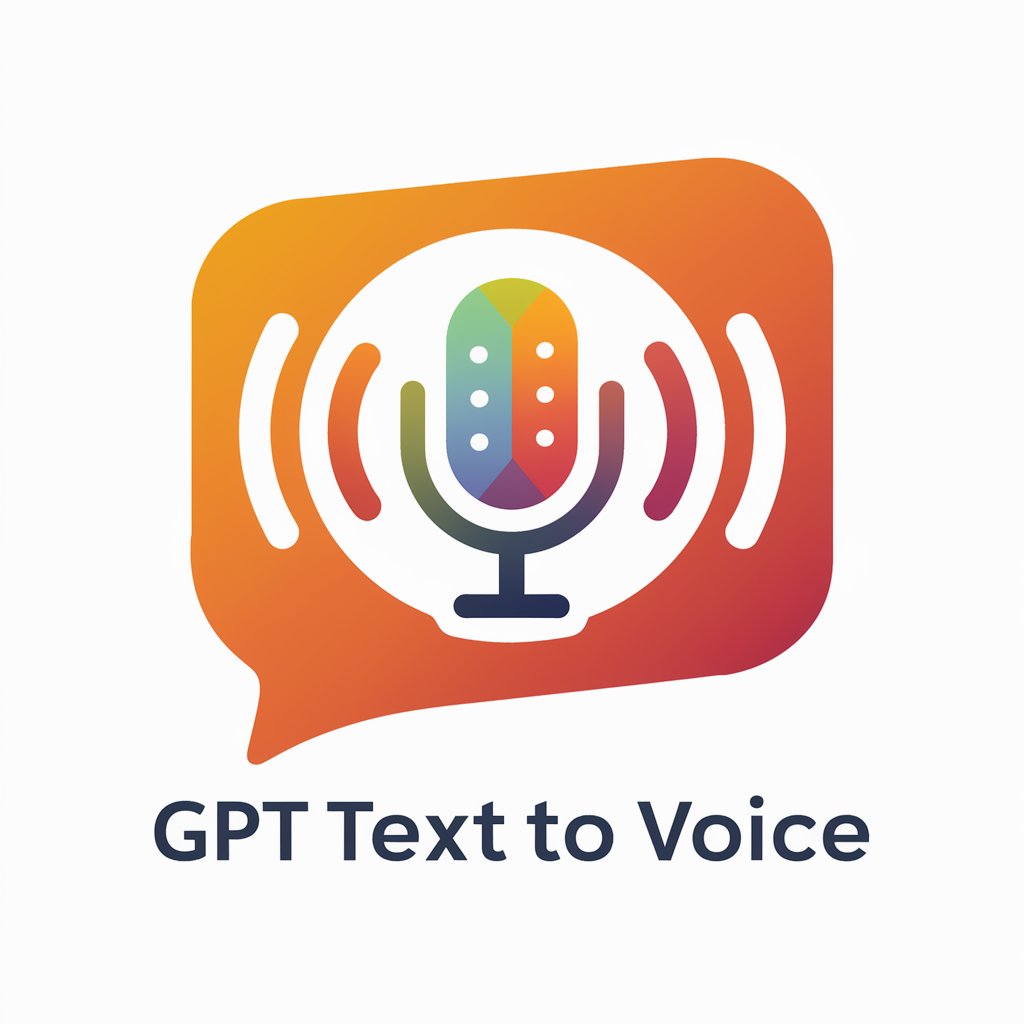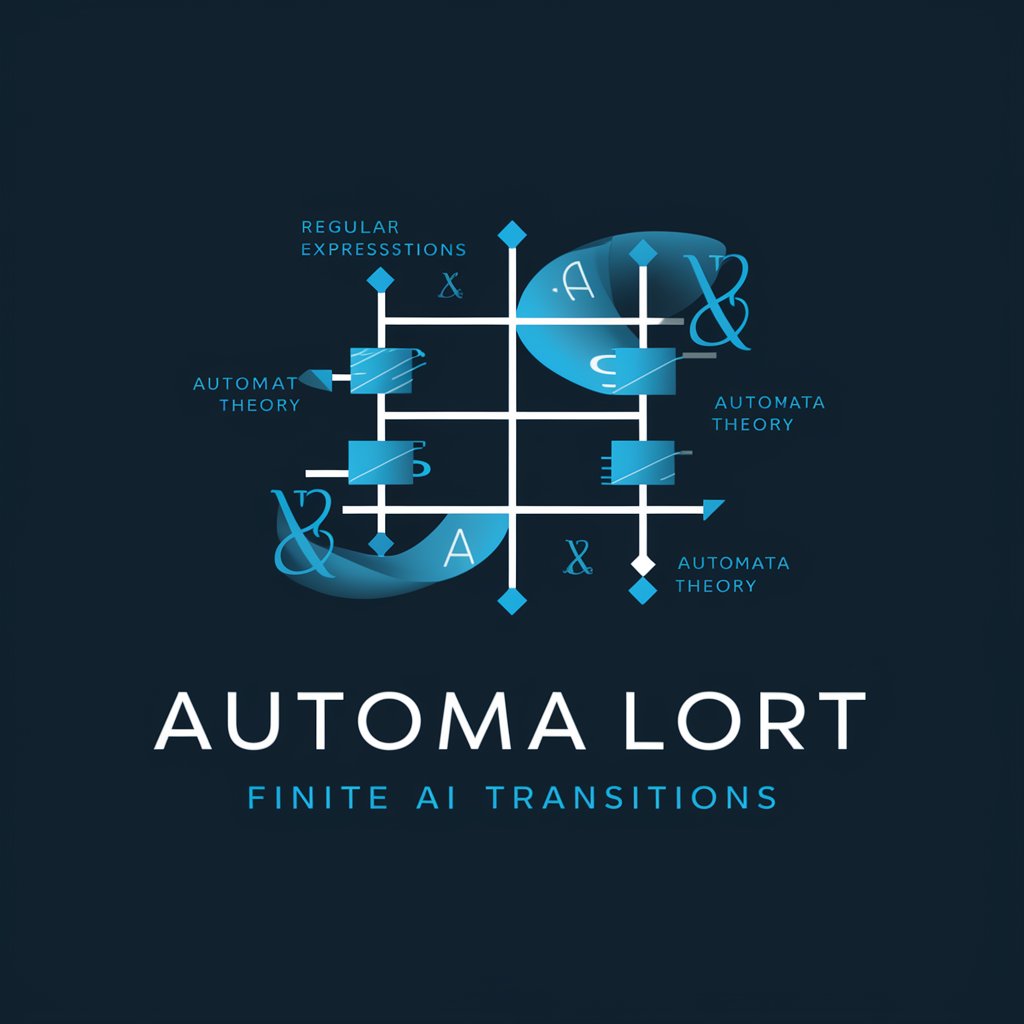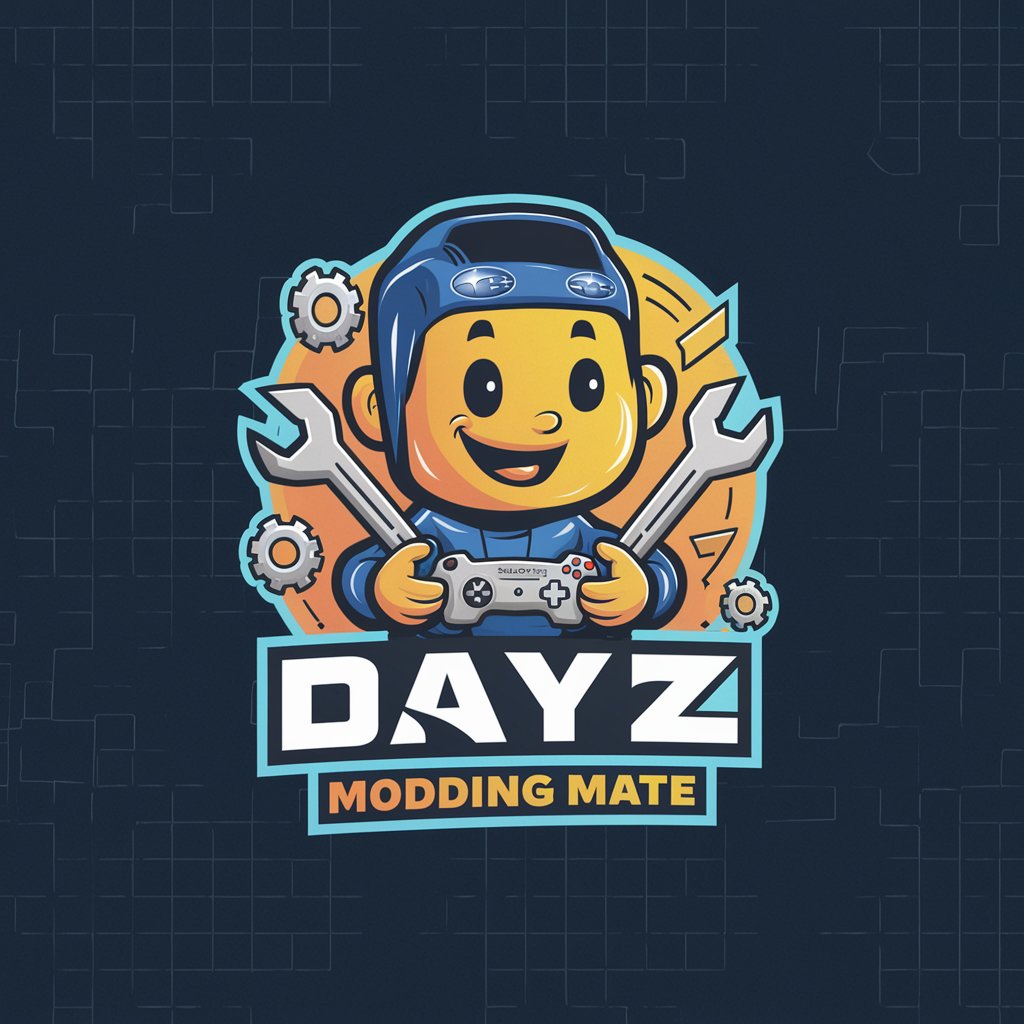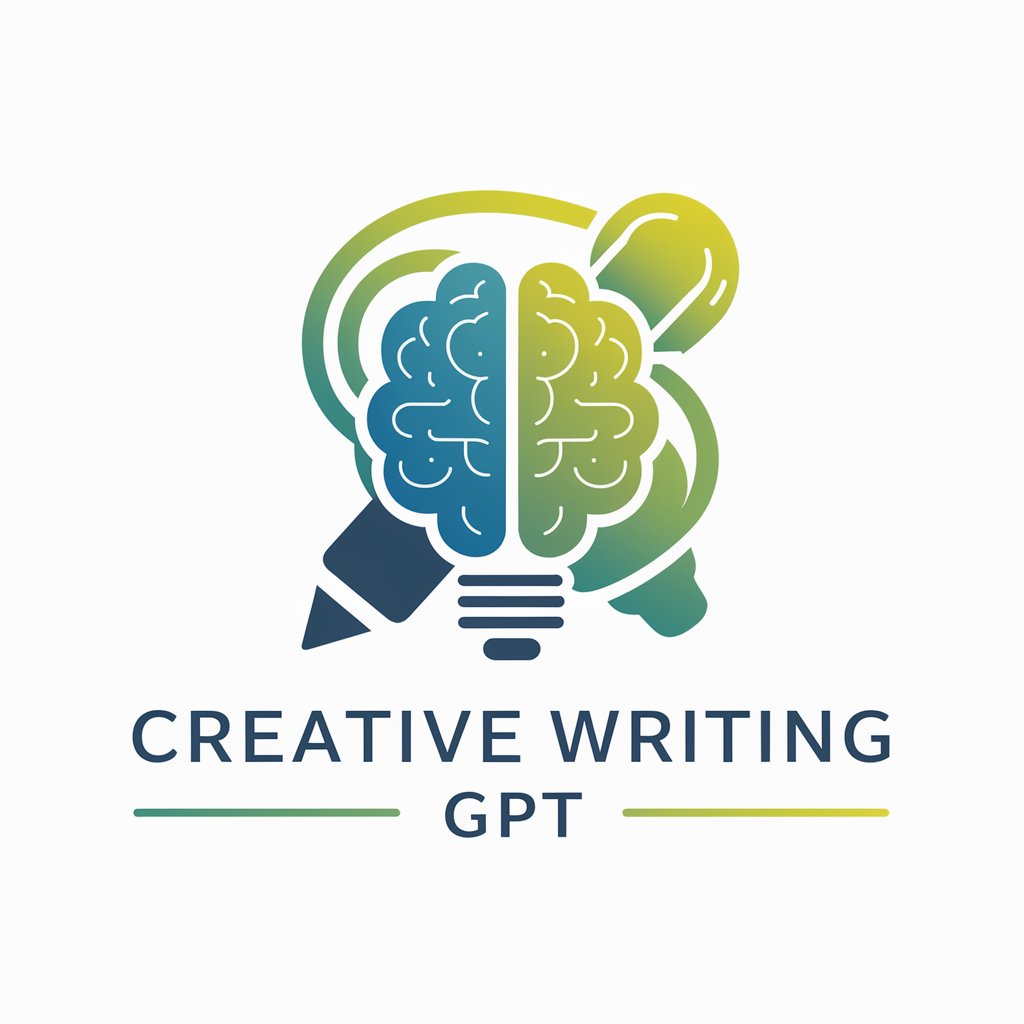
GPT Text to Voice-Text to Speech Conversion Tool
AI-powered, seamless text-to-speech conversion

Friendly and adaptable text-to-speech GPT.
Read this text in a friendly tone
Can you be more formal in this narration?
Adapt your tone for a casual reading
Show a professional style in this reading
Get Embed Code
Introduction to GPT Text to Voice
GPT Text to Voice is a cutting-edge technology designed to transform written text into natural-sounding speech using artificial intelligence. The core design purpose of this system is to make text more accessible and interactive by converting it into audio, enhancing the user experience for a wide range of applications. It leverages advanced machine learning models, specifically designed for speech synthesis, to generate human-like voices that can understand and replicate tone, emotion, and nuance in language. The underlying architecture of GPT Text to Voice is rooted in neural networks trained on vast datasets of spoken and written language. This enables it to create nuanced speech outputs that sound natural and convey complex ideas with emotional depth. A simple scenario could involve a visually impaired user reading news articles aloud through the technology, while another scenario might be an automated customer service agent responding to a query in a conversational tone, sounding almost indistinguishable from a human operator.
Main Functions of GPT Text to Voice
TextGPT Text to Voice-to-Speech Synthesis
Example
Converting an article or document into an audio format.
Scenario
Imagine a user who wants to read a long research paper but prefers listening rather than reading. GPT Text to Voice can process the text and output it as speech, enabling the user to consume the content hands-free while multitasking or when commuting. The output can adjust for tone, pitch, and speed, making the listening experience engaging and easy to follow.
Multilingual Voice Synthesis
Example
Converting text from multiple languages into speech.
Scenario
A global company might use GPT Text to Voice for customer support. The service needs to interact with clients in various languages. The system can convert texts in French, Spanish, and Mandarin into clear, culturally appropriate speech, making it easier for non-English speakers to receive assistance in their native language.
Emotion-Aware Speech Generation
Example
Generating speech with varied emotional tones based on context.
Scenario
In a mental health app, GPT Text to Voice could read calming messages or affirmations to users with a soothing tone when a user is stressed or anxious. The system might adjust its emotional delivery depending on the content—cheerful and energetic for motivation, or calm and measured for relaxation and comfort. This feature is essential for applications where emotional nuance can enhance user experience, such as therapy bots, interactive educational tools, or personal virtual assistants.
Customizable Voice Profiles
Example
Allowing users to choose specific voice characteristics, such as accent, pitch, and gender.
Scenario
A user might want to personalize their experience by selecting a voice with a particular accent or a deeper tone for better clarity. This function is useful in educational tools for children, where different characters could be assigned distinct voices, or in audiobook creation, where a specific vocal style is important for engagement and immersion.
Real-time Speech Synthesis for Interactive Systems
Example
Generating dynamic speech in response to real-time inputs in customer service or gaming.
Scenario
In a video game, GPT Text to Voice could be used to generate dynamic dialogue responses from non-player characters (NPCs). As the player interacts with the game world, NPCs could respond with natural, context-aware speech, improving the immersion and realism of the game. In customer service chatbots, this function would allow a conversational AI to respond to inquiries with instant, contextually appropriate spoken answers.
Ideal Users of GPT Text to Voice Services
Visually Impaired Users
Individuals with visual impairments can benefit greatly from GPT Text to Voice services, as the technology provides a means to access written content through audio. This includes reading books, websites, articles, and other texts aloud. It allows these users to interact with digital content that would otherwise be inaccessible to them, enhancing their independence and access to information.
Content Creators and Educators
Content creators, educators, and instructional designers can utilize GPT Text to Voice to produce high-quality audio content from their written materials. This includes creating audio versions of articles, books, tutorials, and educational resources. In the context of online learning, educators can quickly generate lectures or podcasts, making their content available in a more engaging and accessible format for learners who prefer listening over reading.
Businesses with Customer Service Needs
Businesses looking to enhance their customer service operations can implement GPT Text to Voice for automating responses to customer queries. This could involve setting up interactive voice response (IVR) systems or integrating it into chatbots for real-time support. Companies in the e-commerce, banking, healthcare, and telecommunications industries, for example, could improve customer interactions by offering efficient, scalable, and human-like voice interactions.
Language Learners
Language learners can use GPT Text to Voice to improve their pronunciation, listening skills, and language comprehension. The system can produce spoken versions of language learning exercises, allowing learners to hear correct pronunciation and intonation. Additionally, learners can adjust the speed and clarity of speech to suit their learning preferences.
Developers and AI Enthusiasts
Developers and AI enthusiasts interested in integrating speech synthesis into their applications or projects are also ideal users. GPT Text to Voice offers an API that allows developers to embed text-to-speech functionality into various platforms, such as voice-activated assistants, gaming, or accessibility tools. This opens up possibilities for customized, interactive, and user-centric applications.
1. Visit aichatonline.org for a free trial without login, no need for ChatGPT Plus.
To get started, simply visit aichatonline.org. You don’t need to log in or subscribe to ChatGPT Plus. The website offers a free trial for new users, making it easy to explore the text-to-voice capabilities right away.
2. Enter your text into the input box.
Once on the website, find the input box where you can type or paste your desired text. This can be anything from a simple sentence to a longer paragraph, depending on what you'd like to convert into speech.
3. Choose a voice model and language.
Select the voice model you prefer from the available options (male, female, different accents) and pick the language you want to use for the speech output. The tool supports a variety of languages and accents to suit different preferences.
4. Adjust settings like speed and pitch (optional).
For more personalized control over the audio output, you can adjust settings such as the speech speed, pitch, and volume. These options can help you fine-tune the voice to suit your preferences or make the voice more natural.
5. Press ‘Play’ to listen and downloadHow to use GPT Text to Voice (if needed).
After customizing your settings, press the ‘Play’ button to listen to your text being read out loud. If you're satisfied with the result, you can download the audio file or use the voice output directly on the platform.
Try other advanced and practical GPTs
Automata Expert
Automate your tasks with AI expertise.

Natalia Beauty World
AI-powered beauty & branding strategist

Claude 3
Claude 3 — AI-powered reasoning and writing assistant

asif-claude
AI-driven content creation and analysis.

DayZ Modding Mate
AI-powered assistant for seamless DayZ modding.

同じ顔を使って異なる物語を生成する画像生成器
Create unique stories with one face.

Oferta Direta
AI-powered ad copy that converts

Zen Co-Pilot by ty-gpt.com
AI-powered assistant that streamlines support workflows

CAE Simulation Expert-Ansys|Fluent|LS-DYNA|Abaqus
AI-powered CAE simulation and automation

Creative Writing
AI-powered creativity, tailored to your writing.

Bash Shell Script
Automate tasks with AI-powered Bash scripting

Chem Solver
AI-powered chemical analysis at your fingertips

- Language Learning
- Customer Support
- Podcasting
- Content Accessibility
- Voiceover Production
Frequently Asked Questions about GPT Text to Voice
What is GPT Text to Voice?
GPT Text to Voice is an AI-powered tool that converts written text into natural-sounding speech. It uses advanced machine learning algorithms to analyze text and generate realistic voice output, with various customization options available for voice type, speed, and pitch.
Can I use GPT Text to Voice for multiple languages?
Yes, GPT Text to Voice supports a wide range of languages and accents. You can easily switch between different languages and choose specific accents to match your needs, whether for content localization or diverse audiences.
Is the GPT Text to Voice service free?
GPT Text to Voice offers a free trial without requiring a subscription or login. You can test out the features and experience the tool’s functionality at no cost. However, premium features or extended usage may require a subscription.
How do I improve the quality of the voice output?
You can adjust settings such as speed, pitch, and volume to fine-tune the voice. Additionally, ensuring that the input text is clear and well-structured can help achieve smoother and more natural speech output.
Can I use GPT Text to Voice for commercial projects?
Yes, GPT Text to Voice can be used for commercial purposes. However, you should check the specific licensing terms of the platform to ensure it meets your project’s requirements, especially for high-volume or professional applications.






